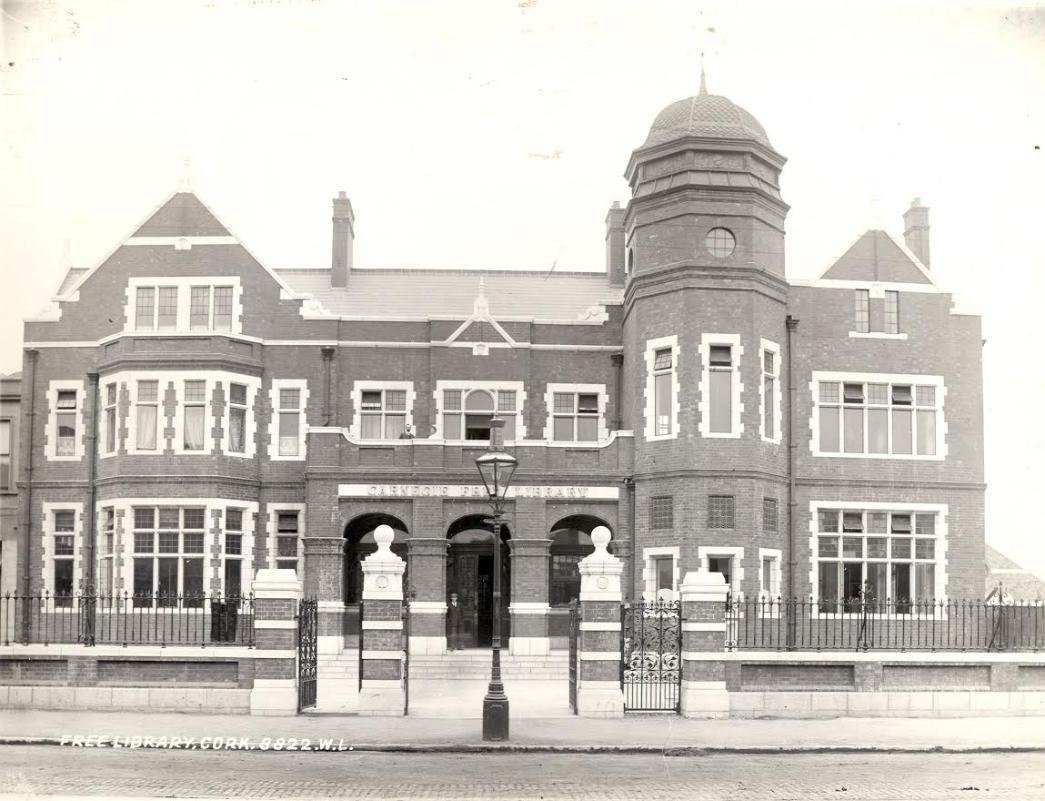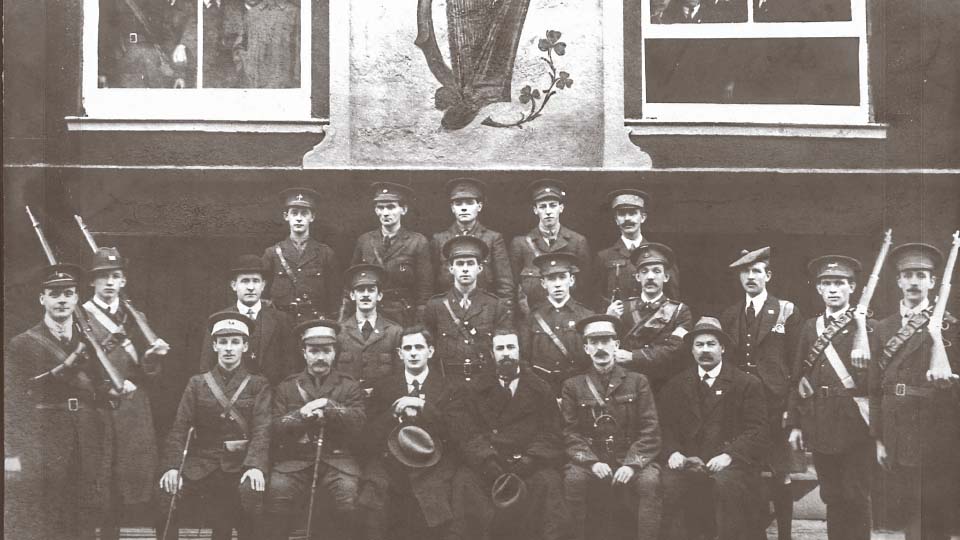- Home
- Collections
- Atlas Resources for Schools
- Cork Fatality Register
- Mapping the Irish Revolution
- Mapping IRA Companies, July 1921-July 1922
- Mapping the Burning of Cork, 11-12 December 1920
- Martial Law, December 1920
- The IRA at War
- The Railway Workers’ Munitions Strike of 1920
- The Victory of Sinn Féin: The 1920 Local Elections
- The War of Words: Propaganda and Moral Force
- The IRA Offensive against the RIC, 1920
- De Valera’s American Tour, 1919-1920
- The British Reprisal Strategy and its Impact
- Cumann na mBan and the War of Independence
- The War Escalates, November 1920
- The War of Independence in Cork and Kerry
- The Story of 1916
- A 1916 Diary
- January 9-15 1916
- January 10-16, 1916
- January 17-23, 1916
- January 24-30, 1916
- February 1-6 1916
- February 7-14, 1916
- February 15-21, 1916
- February 22-27, 1916
- February 28-March 3, 1916
- March 6-13,1916
- March 14-20, 1916
- March 21-27 1916
- April 3-9, 1916
- April 10-16, 1916
- April 17-21,1916
- May 22-28 1916
- May 29-June 4 1916
- June 12-18 1916
- June 19-25 1916
- June 26-July 2 1916
- July 3-9 1916
- July 11-16 1916
- July 17-22 1916
- July 24-30 1916
- July 31- August 7,1916
- August 7-13 1916
- August 15-21 1916
- August 22-29 1916
- August 29-September 5 1916
- September 5-11, 1916
- September 12-18, 1916
- September 19-25, 1916
- September 26-October 2, 1916
- October 3-9, 1916
- October 10-16, 1916
- October 17-23, 1916
- October 24-31, 1916
- November 1-16, 1916
- November 7-13, 1916
- November 14-20, 1916
- November 21-27-1916
- November 28-December 4, 1916
- December 5-11, 1916
- December 12-19, 1916
- December 19-25, 1916
- December 26-January 3, 1916
- Cork's Historic Newspapers
- Feature Articles
- News and Events
- UCC's Civil War Centenary Programme
- Irish Civil War National Conference 15-18 June 2022
- Irish Civil War Fatalities Project
- Research Findings
- Explore the Fatalities Map
- Civil War Fatalities in Dublin
- Civil War Fatalities in Limerick
- Civil War Fatalities in Kerry
- Civil War Fatalities in Clare
- Civil War Fatalities in Cork
- Civil War Fatalities in the Northern Ireland
- Civil War Fatalities in Sligo
- Civil War Fatalities in Donegal
- Civil War Fatalities in Wexford
- Civil War Fatalities in Mayo
- Civil War Fatalities in Tipperary
- Military Archives National Army Fatalities Roll, 1922 – 1923
- Fatalities Index
- About the Project (home)
- The Irish Revolution (Main site)
January 17-23, 1916
Each week, we look back at what was “in the news” the same week 100 years ago – as reported in the Cork Examiner in 1916.
By Nicola Stathers

Monday, January 17, 1916
- FLOODS IN IRELAND, GREAT DAMAGE
Following the recent heavy weather, the great Irish rivers Shannon and Barrow have overflowed their banks and wrought great havoc in the Midlands, the inundations being the greatest within living memory. In the Athlone, Westmeath and Banagher (King’s County) districts, floods are periodical, resulting in great devastation. The people in the flooded areas are at present in a hopeless condition, their decks and other belongings having been destroyed. An effort was made some years ago to obtain Government assistance for drainage works but the scheme fell through. Roads have also been washed away and people are cut off from communication with adjacent towns except by boat.
- GAELIC ATHLETIC ASSOCIATION, Cork County Board Annual Convention
Satisfactory reports from the Annual Convention of the GAA Cork County Board, presented by honorary treasurer, Mr M O’Sullivan: “I may incidentally remark in passing that there is a very fine team of footballers at present in the county, and I would wish the incoming committee would take them in hands as they could see from their display against Kerry the material is there, if only developed….Turning to the income side, our gate receipts have increased as against 1914 by £80, but our affiliation and championship fees are reduced by £13, a fact to be regretted. The principal falling off in this respect is North and West Cork, and I think it advisable to send a man during the early part of this year to organise those divisions.”
- TIPPERARY NAVAL MAN’S DROWNING
Body Found (From Our correspondent) Tipperary, Sunday Mr Michael Falvey, weighmaster, Tipperary, whose son, Daniel, who joined the Royal Navy in September last, and who fell overboard the torpedo” boat destroyer “Tipperary,” and was drowned at Devonport some days after Christmas, has received a telegram from the naval authorities that the body had been found. The remains will be sent to Tipperary, where they will be interred in the New Cemetery.
Wednesday, January 19, 1916
- NEW ADDITIONS AT THE CARNEGIE FREE LIBRARY
New additions in the Lending Library: – Belloc, General Sketch of the European War – Balfour, Theism and Humanism – Rosenberg, Electrical Engineering – Bayley, Complete Photographer – Sommerville and Ross, In Mr. Knox’s Country – Wylie, Temple of Dawn. Reference Library: – Madden, History of Irish Periodical Literature, 2 volumes – Catholic Record Society’s vol. 17 – Co-operative Wholesale Society’s Annual 1916.
The Carnegie Library was destroyed in the Burning of Cork, December 11, 1920…
Not in the News
Many of the main players in the 1916 Rising featured regularly in newspapers of the time, but most of the activities relating to the Rising did not feature in the news and are only now known from information held in archives.
Compiled by Nial Murray, the Irish Examiner

Officers of the Irish Volunteers Cork Brigade with Seán MacDermott and Herbert Moore Pim on the day of the Manchester Martyrs’ commemoration/parade, November 28, 1915, at the Volunteer Hall, Sheares St, Cork. Front (seated): Seán Murphy (Brigade quartermaster), Tomás MacCurtain (Brigade commandant), Seán MacDiarmada, Herbert Moore Pim, Seán O’Sullivan (city battalion commandant), Seán Ó Muirthile. Centre: Tom O’Sullivan and Diarmuid O’Shea (with rifles), Tom Barry, Pat Corkery, Donal Barrett (captain City Volunteers B company), Donal Óg O’Callaghan (suceeded Terence MacSwiney as Cork’s Lord Mayor), Tadhg Barry, Diarmuid Lynch, Con Twomey (one of two men with rifles on right) Back: Dick Murphy, Seán Nolan, Daithí Cotter, Seán Scanlan (captain City Volunteers A company), Fred Murray. [Picture: Cork Public Museum]
Monday, January 17, 1916
- Dublin Metropolitan Police (DMP) saw Seán McGarry, Charles Kickham, John Milroy and Michael O’Hanrahan, among others, visit the shop of Tom Clarke — Irish Republican Brotherhood (IRB) Military Council member -at 75 Parnell Street.
- Éamon de Valera, Michael O’Hanrahan, Tomás MacDonagh, and JJ O’Connell met at Volunteer Office, according to the same police report.
- A meeting in Dublin’s Mansion house chaired by Eoin MacNeill was attended by many leading members of the Irish Volunteers, Sinn Féin, and other nationalists. Under the auspices of the Gaelic League, it was held to protest against withdrawal of grants for education in Ireland.
*****
Tuesday, January 18 1916
- At Irish Volunteers head office in Daswon St, police report a meeting took place of founder Bulmer Hobson, Eimar O’Duffy, Michael O’Hanrahan (later executed after the Rising), Herbert Mellows from Galway and Tomás MacDonagh (a later member of the IRB Military Council that planned the Rising, and executed on May 3, 1916.)
- A Cuman na mBan concert in the Mansion House was an opportunity to meet for Pádraig Pearse, Eamonn Ceannt, Con Colbert, MacDonagh, and Joseph Plunkett, all executed within four months.
- Tom Clarke’s shop visited by Con Colbert, Joseph McGuinness, Herbert Mellows, Thomas McCarthy, and Ben Parsons.
*****
Wednesday, January 19, 1916
- Alfred Cotton was among those who attended Volunteers headquarters in Dublin. He was second-in-command to Austin Stack, commandant of the Irish Volunteers Brigade in Kerry. As senior IRB figures in Kerry, they knew from Pearse of plans for a rising at Easter. Central to plans was the proposed landing of German guns at Fenit in Tralee Bay, Easter weekend at the end of April.
- James Connolly ‘disappeared’ for several days, being taken to a house in Dolphin’s Barn where Pearse, Seán MacDiarmada and Plunkett convinced him to hold off his plans to instigate a rising with his Irish Citzen Army. He was brought into the loop about their own IRB plot, and the style of rebellion was also discussed. Connolly favoured an urban rising, having weeks earlier described in a lecture in Cork how to tunnel between the walls of terraced city houses.
*****
Thursday, January 20, 1916
- Those visiting Irish Volunteers headquarters at 2 Dawson St in Dublin included Herbert Mellows, Michael O’Hanrahan, Tomás MacDonagh, and JJ O’Connell.
*****
Friday, January 21, 1916
- O’Hanrahan, MacDonagh, and MacDiarmada, Piaras Béaslaí, and Thomas Hunter all attended meetings in Volunteers head office. (While the first three would be executed in May, Béaslaí and Hunter would become members of the first Dáil in 1919. Béaslaí was TD for East Kerry and Hunter for North East Cork. Before their election in December 1918, another attendee at this meeting, Éamon de Valera had already won an East Clare by-election for Sinn Féin in July 1917.)
- Visits to Thomas J Clarke at 75 Parnell Street by Pierce Beasley [Piaras Béaslaí], John McDermott [Seán MacDiarmada], John O’Mahony, [John] R Reynolds, John [Séan] McGarry, Michael O’Hanrahan and FJ [Frank] McCabe, Pádraig Pearse, Seán MacDiarmada and WT Cosgrave (future president of the executive council of the Irish Free State), all seen by police in 41 Parnell Square, an address commonly used by both the IRB and the Irish Volunteers.
*****
Sunday, January 22, 1916
- Officers training camp began at Volunteers’ Hall, Sheares St, Cork, instructed by JJ O’Connell.
- The course was to cover ‘field work, elementary drill, physical drill, and lectures’, according to the notice placed in the Irish Volunteer newspaper.
- Most of the companies in the county — mainly formed in the previous six months thanks to organisers like Terence MacSwiney, Seán Nolan and Daithí Barry — were represented.
- Diarmuid Lynch from near Kinsale, Co Cork was among those who visited Tom Clarke’s Dublin shop, as were Con Colbert and Ned Daly, two of those who would be executed in May. (A key member of the IRB Supreme Council, Lynch had helped identify a suitable landing place in Kerry for German guns at Pearse’s behest the previous year.)
.
Sources
